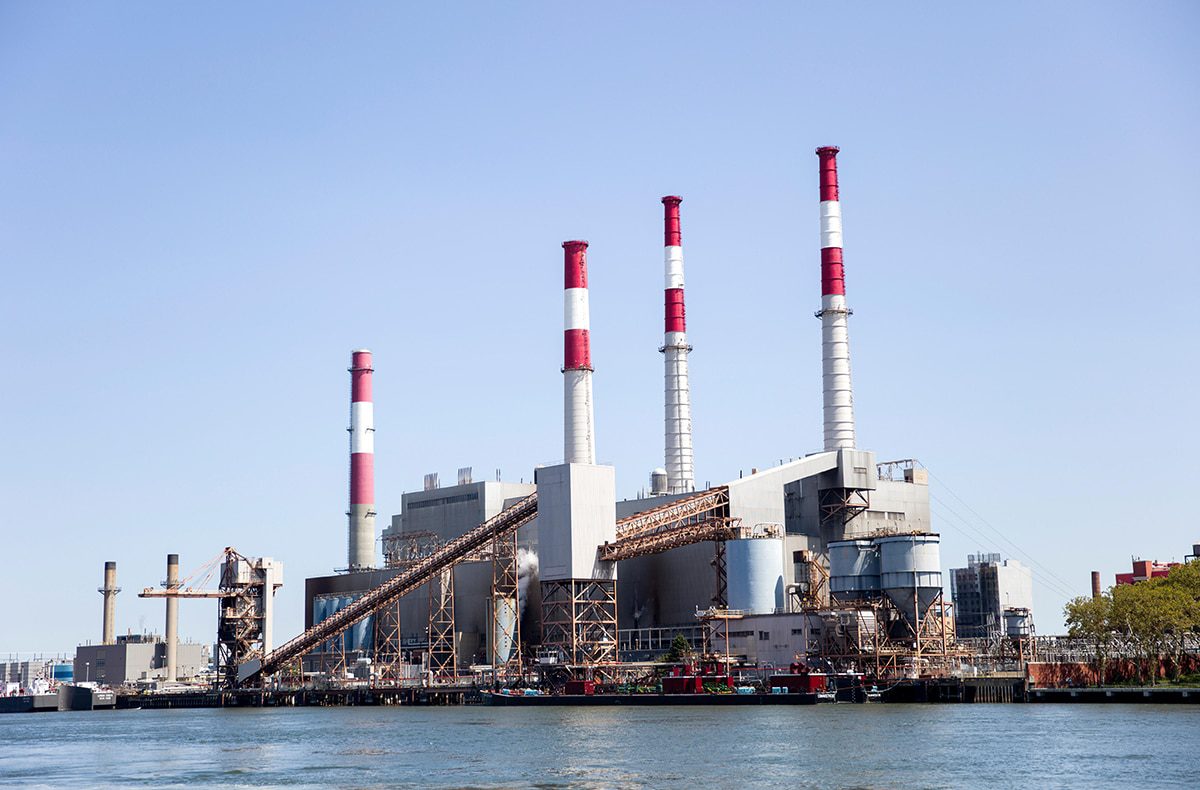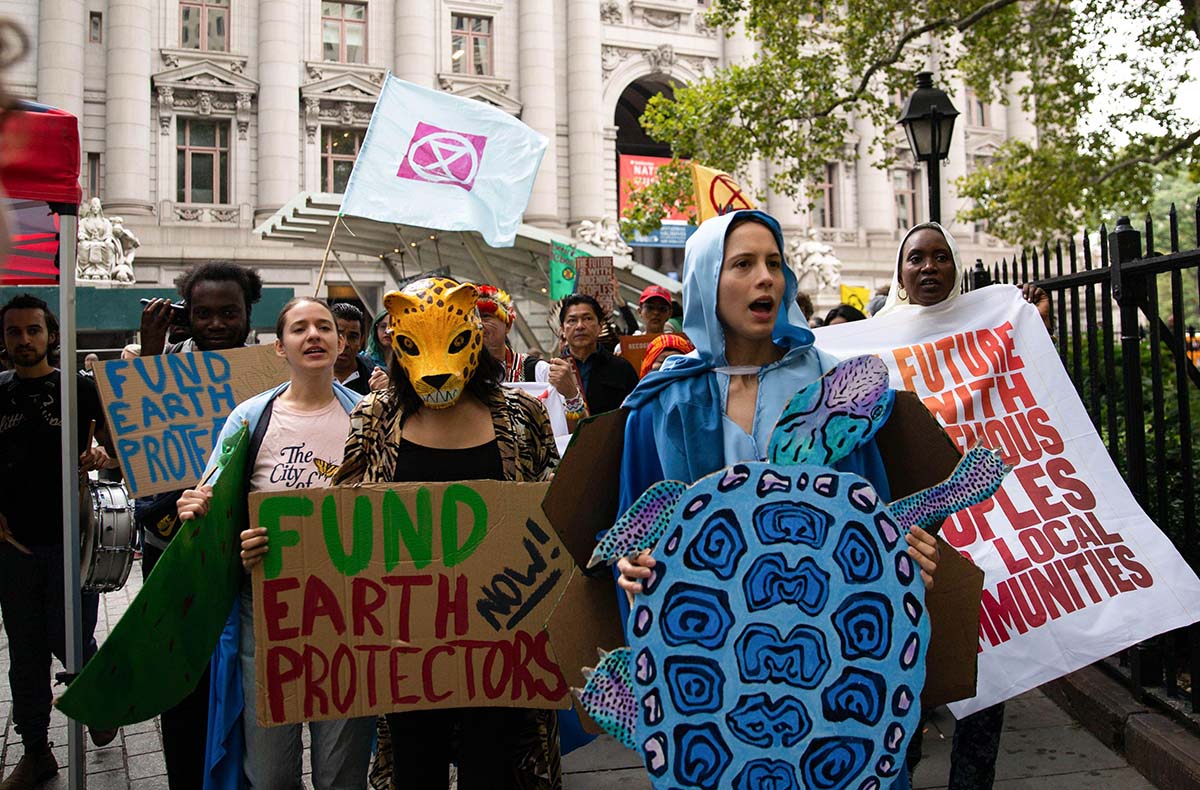
Jutting out from South Brooklyn’s post-industrial coastline, a stone’s throw from where the Rockaway Ferry stops on its way to the beach, a pier connects the mainland to two barges supporting large, windowless boxes that look like oversized storage containers. This is the Narrows Generating Station, a power plant whose sole purpose is to switch on when energy demand peaks. Innocuous clusters like the Narrows dot New York’s shores, telltale signs of an open secret: When the city’s demand for energy spikes, it turns to its dirtiest energy sources.
“Peaker” plants like the Narrows sit idle for over 90 percent of the year but come online when the city’s energy demand places strain on the grid, as it did during last month’s heatwave. New York is home to over a dozen peakers, all of which burn exclusively fossil fuels and most of which are adjacent to low-income neighborhoods. It’s a quick and filthy fix to a problem that demands clean, long-term solutions.
But thanks to a coalition of environmentalists and new regulations that took effect in 2019, New York City’s peaker plants may soon be a thing of the past.
“The tides have shifted here,” said Seth Mullendore, Executive Director and President of the Clean Energy Group, which has collaborated with the New York Power Authority on efforts to replace peaker plants with greener alternatives. “And we need to keep moving forward.”
New York City says it’s committed to using 100% renewable energy by 2040, but right now, it relies on 69% fossil fuels. That percentage goes up when peaker plants come online, burning fracked gas, oil, and even kerosene to keep the lights and AC units running during peak consumption.
That’s right: New York City still burns kerosene for its fuel.
Unsurprisingly, the vast majority of the city’s peaker plants sit adjacent to underserved communities, belching huge amounts of carbon dioxide and nitrogen oxide into air breathed by a disproportionately high number of Black and brown New Yorkers. A 2019 study by the PEAK Coalition, a collection of environmental groups focused on shutting down peakers, found that of the roughly 750,000 New Yorkers living within a mile of a peaker plant, 78% were people of color. Peakers are not unique to New York, nor is this structural inequality: The CEG reports that two out of every three peaker plants in the United States is adjacent to a low-income neighborhood. Peakers contribute to “asthma alleys,” working-class neighborhoods where pollution has caused respiratory illness rates to soar far above the citywide average.
Unlike regular power plants, peakers seldom run for more than a few hours at a time. Most operate for around 5% of the year (typically the hottest 5%, although Mullendore noted that “winter peaking” has become more common as more housing units convert to electrical heating). That makes it all the more egregious that they account for nearly five percent of the city’s total annual carbon dioxide emissions, and that New Yorkers have paid over $4.5 billion to maintain them over the last decade.
It’s easy to see why environmental organizers have made peaker plants some of their chief targets in recent years. And with the 2019 passage of the Climate Leadership and Community Protection Act, the state now has some of the tools it needs to take peakers offline for good.
The CLCPA introduced new emissions standards and goals, allowing the New York Department of Environmental Conservation to withhold permits for projects that don’t pass muster. Climate organizers claimed a major victory in October, when the DEC rejected a proposed peaker plant in Astoria, Queens. The decision came after a public outcry that began with local groups like the PEAK Coalition and CEG and grew to include the likes of Rep. Alexandria Ocasio-Cortez and Sen. Chuck Schumer.
NRG is appealing the decision, which Gov. Kathy Hochul applauded and which Mullendore says is likely to stand.
“We’re feeling good about that,” Mullendore said. “The DEC made it clear that you can’t build a new gas plant that’s just not complying with CLCPA.”
After the NRG decision, Eastern Generation put the brakes on the “re-firing” of its peaker plant in Gowanus, another barge-based gas-burner. Instead, the barges will house floating batteries, storing energy and deploying it when demand peaks.
According to Mullendore, batteries are the way of the future.
Previously thought to be too expensive, the price of batteries has dropped in recent years, making them an affordable alternative to pricey peakers. Of course, batteries can’t replace peakers’ ability to generate electricity, but the CEG is encouraged by the Clean Path NY project, which will connect the metro area with solar, wind, and hydroelectric power generated upstate and in Canada. The Public Service Commission approved the project, which proponents say will cut the city’s reliance on fossil fuels in half, in April.
But of course, there is no simple fix to the thorny problem of a green transition. Batteries will be a single part of a complex whole that will require serious commitment from all levels of government.
“You can effectively replace [peakers] with renewables and battery storage,” Mullendore said. “But it’s going to take a lot of development. We’re going to need offshore wind. We’re going to need a lot of in-city solar, on roofs. We’re going to need a lot of in-city battery development to make sure that we’ve got the resources in the right places, where they’re going to make a difference.”
The undertaking Mullendore described is massive, but urgently needed. Last month’s heatwave killed at least three New Yorkers, a tragic figure that sadly pales in comparison to the long-term damage done by peaker plants. The only sensible way forward is for New York to move past its peakers and toward renewable energy.



